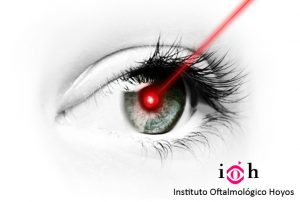LASER TREATMENTS
The word laser derives from the letters in English for Light Amplification by Stimulated Emission of Radiation. The advantage of a laser is that it is a very effective means of transporting energy to a specific point. As many of the eye’s structures are transparent for visible light, the laser has become an excellent tool for ophthalmologists.
ARGON LASER
Some types of low intensity laser produce a controlled burn on specific tissue which they have been designed for. The applications for this type of laser in ophthalmology are :
| Panphotocoagulation | In diabetic retinopathy and venous occlusion, to treat affected areas of the retina which may be affecting the healthy retina. |
| Photocoagulation | The treatment of tears and degeneration of the periphery of the retina as a prevention against retinal detachment. |
| Trabeculoplasty | Treatment of chronic open-angle glaucoma. |
YAG LASER
This type of laser functions as a scalpel, cutting the tissue in a selective and precise way. For this reason it proves very useful when performing :
| Posterior capsulotomy. | Opening of the opacified posterior capsule of the crystalline lens after cataract surgery. |
| Peripheral iridotomy | A small orifice on the periphery of the iris to treat or prevent chronic open-angle glaucoma. |
EXCIMER LASER
This type of laser has very high precision for breaking intramolecular bonds and is used to sculpt the cornea through the process of photoablation in :
| Refractive surgery with laser ( LASIK AND PRK ) | The cornea is sculpted using a laser, giving it a new shape which enables the correction of refraction defects, in the same way that an optician shapes the lenses of glasses or contact lenses. |
| Phototherapeutic keratectomy (PTK) | To eliminate corneal scarring and as a treatment for recurrent corneal erosion syndrome. |

